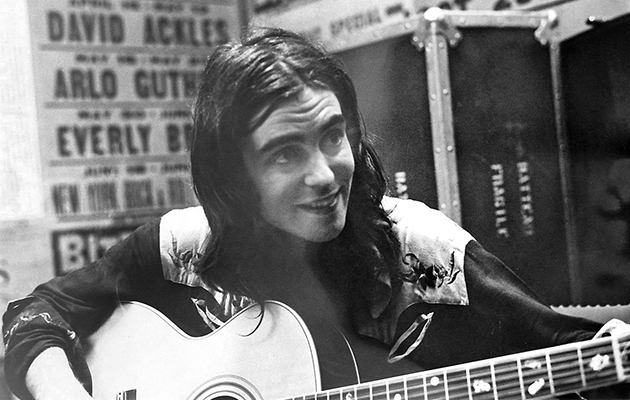As with the Stones, Reid’s business saviour turned out to be Ahmet Ertegun, who sorted out the legal issues with Mickie Most and signed him to Atlantic Records in 1971. The River album was only half finished, but the band had moved on, with Jackson Browne poaching David Lindley, and Alan White accepting an offer to join Yes. That left only Lee Miles, who easily convinced Reid that he should relocate to Los Angeles, where Ertegun set them up with producer Tom Dowd.
Newly esconced in California, Reid began to indulge his fascination with Latin music, which stemmed from an unlikely alliance between Reid and Gilberto Gil, the Brazilian tropicalista who had been exiled in Britain in 1969, and who had become another regular at Holywell.
“That was crazy to have Gil and these amazing Brazilian musicians sleeping on my floor,” recalls Reid. “‘River’ explored that Latin style and we used Willie Bobo, a great Latin percussionist. That song is so complex. It took me three-and-a-half months to write and learn the parts myself, and these guys just played it like it was falling off a log.”
The stripped back “Milestones” was one of only two tracks surviving from the London sessions, while Reid’s soaring vocals were now reminiscent of Tim Buckley’s most challenging work. “The only signature sound on that record,” says Lindley, “is Terry’s voice. His voice was an unmistakable sound, but stylistically, River was out there on its own. Everything Terry heard went into his brain and stayed. You couldn’t contain Terry’s ideas but this was in an age of a lot of style over content.”
As a result, everyone at Atlantic was perplexed by River, and Ertegun released Reid from the deal. “He just tore up the contract,” remembers Reid. “After what I went through with Mickie, I could take some comfort in that. Plus I’m walking away with 20 grand, which Ahmet pays me in cash. That gave me a nest egg.”
When Reid first moved to California, he lived on a Mexican farm, near an old Indian burial ground overlooked by Boney Mountain. Then, he was asked by Hollywood set and costume designer Tony Duquette to be a resident caretaker at his 150-acre property high in the Malibu mountains, a 1,000 feet drop above the Pacific. The property, partly built out of classic MGM sets, was a modern-day Shangri-La. It’s where Reid wrote the songs for Seed Of Memory.
“The places Terry chose to live were really remote,” says Lindley. “In California, if you’re not careful, it’ll suck you in. Resistance is futile. Terry fitted in really well, but he was slightly removed from the main scene. He became part of it but retained his individuality.”
Seed Of Memory, released in 1976, is Reid’s most satisfying album, a warm, graceful and poignant California rock album made with the help of another Brit abroad, Graham Nash, an old friend from Jaywalkers days. “Graham is such a gentleman,” says Reid. “He did so much more than produce it, and of course he sang wonderful harmonies. He had his own ideas but, unlike with Mickie Most, it was always give and take. He really nurtured me through it.”



